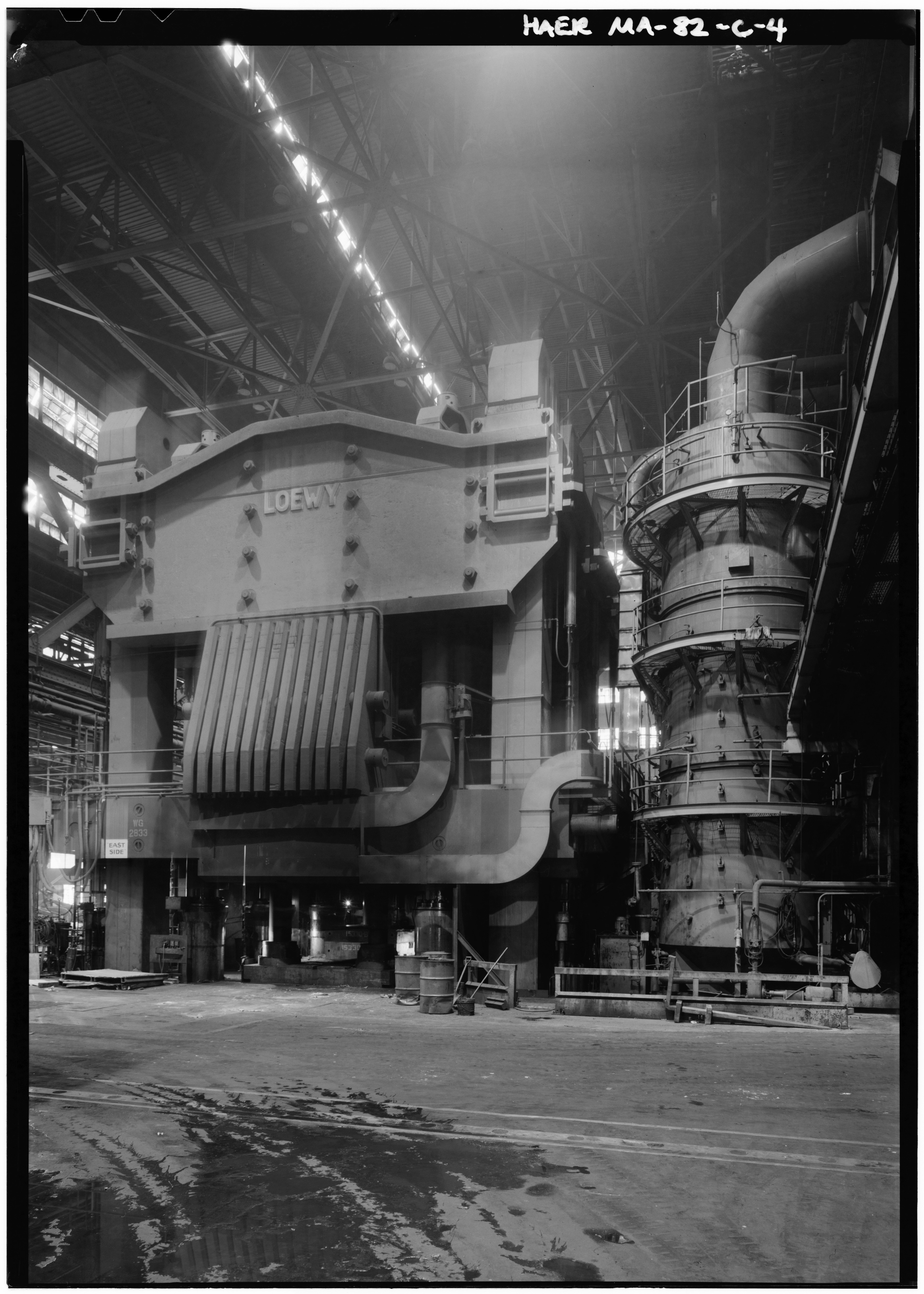Heavy Press Program on:
[Wikipedia]
[Google]
[Amazon]
 The Heavy Press Program was a
The Heavy Press Program was a
 The Heavy Press Program was motivated by experiences from
The Heavy Press Program was motivated by experiences from 
 The Heavy Press Program was a
The Heavy Press Program was a Cold War
The Cold War was a period of global Geopolitics, geopolitical rivalry between the United States (US) and the Soviet Union (USSR) and their respective allies, the capitalist Western Bloc and communist Eastern Bloc, which lasted from 1947 unt ...
-era program of the United States Air Force
The United States Air Force (USAF) is the Air force, air service branch of the United States Department of Defense. It is one of the six United States Armed Forces and one of the eight uniformed services of the United States. Tracing its ori ...
to build the largest forging presses and extrusion presses in the world. These machines greatly enhanced the US defense industry's capacity to forge large complex components out of light alloys, such as magnesium
Magnesium is a chemical element; it has Symbol (chemistry), symbol Mg and atomic number 12. It is a shiny gray metal having a low density, low melting point and high chemical reactivity. Like the other alkaline earth metals (group 2 ...
and aluminum
Aluminium (or aluminum in North American English) is a chemical element; it has chemical symbol, symbol Al and atomic number 13. It has a density lower than that of other common metals, about one-third that of steel. Aluminium has ...
. The program began in 1944 and concluded in 1957 after construction of four forging presses and six extruders, at an overall cost of $279 million. Six of them are still in operation today, manufacturing structural parts for military and commercial aircraft. They still hold the records for size in North America, though they have since been surpassed by presses in Japan, France, Russia and China.
The program produced ten machines, listed below.
Background
 The Heavy Press Program was motivated by experiences from
The Heavy Press Program was motivated by experiences from World War II
World War II or the Second World War (1 September 1939 – 2 September 1945) was a World war, global conflict between two coalitions: the Allies of World War II, Allies and the Axis powers. World War II by country, Nearly all of the wo ...
. Nazi Germany
Nazi Germany, officially known as the German Reich and later the Greater German Reich, was the German Reich, German state between 1933 and 1945, when Adolf Hitler and the Nazi Party controlled the country, transforming it into a Totalit ...
held the largest heavy die forging presses during the war, and translated this advantage into high performance jet fighters. Because of the shortage of aluminum, German aircraft manufacturers used forged magnesium structural components, formed to shape in closed-die hydraulic presses. After finding this, in 1944, the Federal Government asked Wyman-Gordon for assistance, and this program evolved into the Heavy Press Program. Work was started on an 18,000 ton press, built by Mesta Machinery, which was completed in 1946 at the Wyman-Gordon Grafton Plant. Post-war, the Soviet Union
The Union of Soviet Socialist Republics. (USSR), commonly known as the Soviet Union, was a List of former transcontinental countries#Since 1700, transcontinental country that spanned much of Eurasia from 1922 until Dissolution of the Soviet ...
captured the largest German press to survive the war, with a capacity of 33,000 ton, and were suspected to have seized the designs for an even larger 55,000 ton press. The next two largest units were captured by the United States and brought across the Atlantic Ocean
The Atlantic Ocean is the second largest of the world's five borders of the oceans, oceanic divisions, with an area of about . It covers approximately 17% of Earth#Surface, Earth's surface and about 24% of its water surface area. During the ...
, but they were half the size at 16,500 ton. As Cold War fears developed, American strategists worried that this would give the Soviet Air Force a crucial advantage and designed the Heavy Press Program to help win the arms race
An arms race occurs when two or more groups compete in military superiority. It consists of a competition between two or more State (polity), states to have superior armed forces, concerning production of weapons, the growth of a military, and ...
.
Seventeen presses were originally planned with an expected cost of $389 million, but the project was scaled back to 10 presses in 1953.
Air Force Lieutenant General Kenneth B. Wolfe
Kenneth Bonner Wolfe (12 August 1898 – 20 September 1971) was a lieutenant general in the United States Air Force who was responsible for the development and early operations of the Boeing B-29 Superfortress bomber. A graduate of the University ...
was the primary advocate for the Heavy Press Program. Alexander Zeitlin was another prominent figure of the program.

Presses
Landmark designation
TheAmerican Society of Mechanical Engineers
The American Society of Mechanical Engineers (ASME) is an American professional association that, in its own words, "promotes the art, science, and practice of multidisciplinary engineering and allied sciences around the globe" via "continuing edu ...
designated the 50,000-ton Alcoa and Wyman-Gordon presses as Historic Mechanical Engineering Landmarks. The Alcoa press weighs 8,000 tons and is tall. The die table is , and the maximum stroke is .
External links
*References
{{reflist 1950 establishments in the United States 1957 disestablishments in the United States Projects established in 1950 Projects disestablished in 1957 Public–private partnership projects in the United States Industry in the United States 20th-century history of the United States Air Force Cold War history of the United States Presswork Projects of the United States Air Force